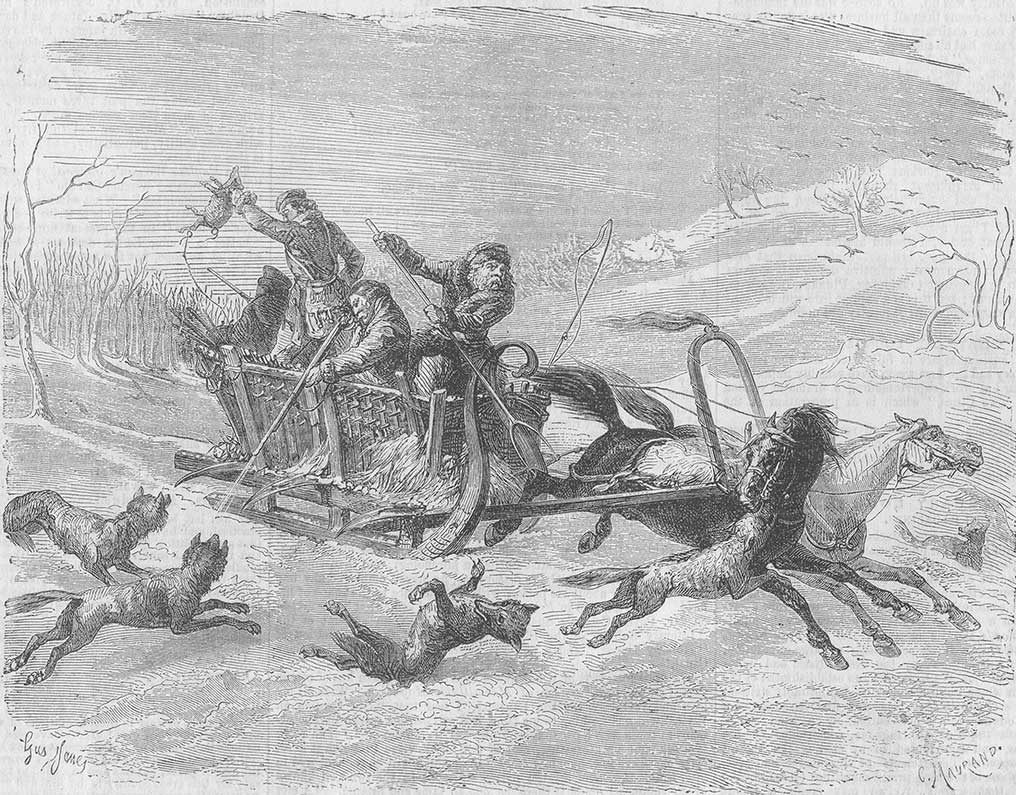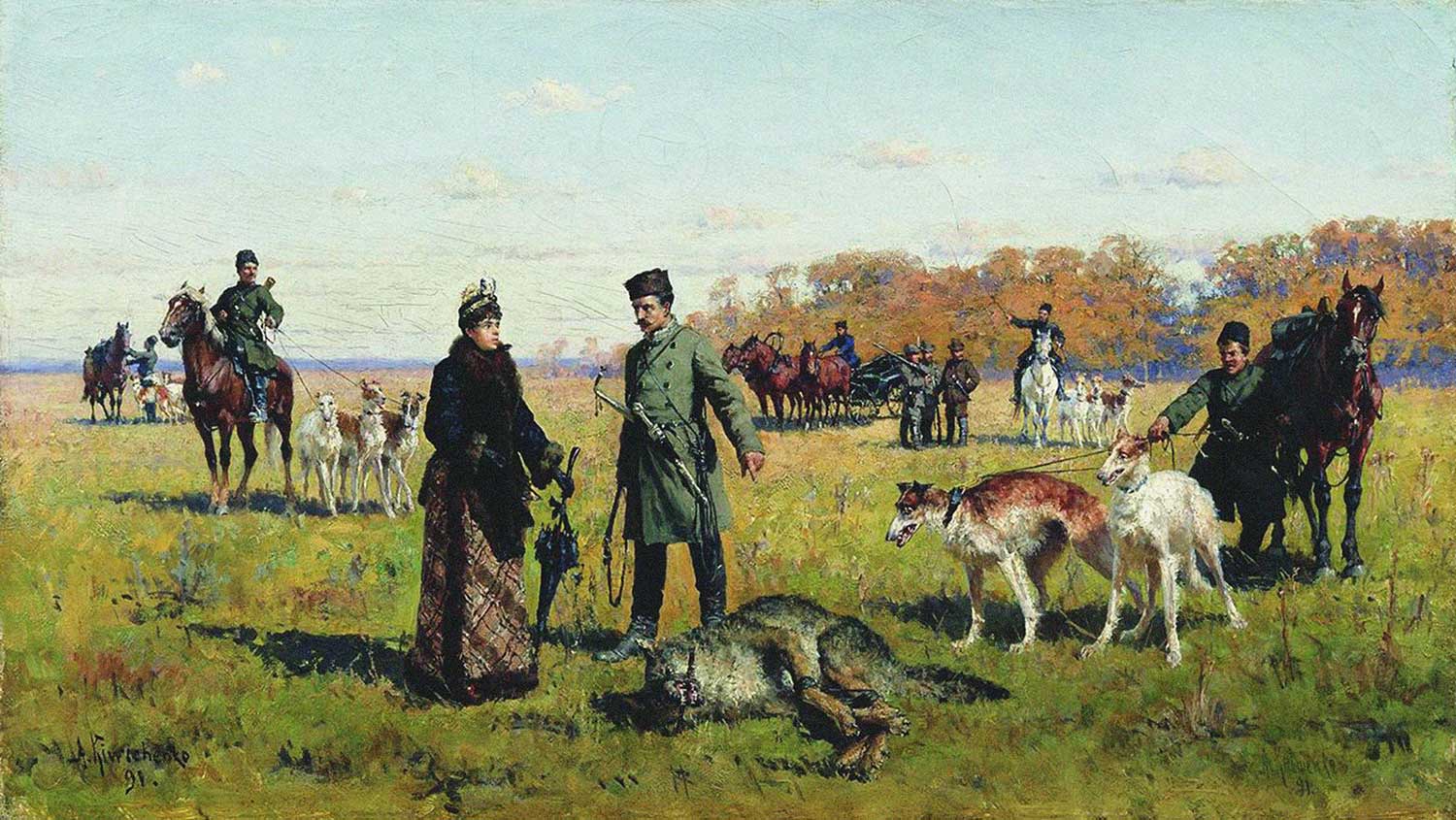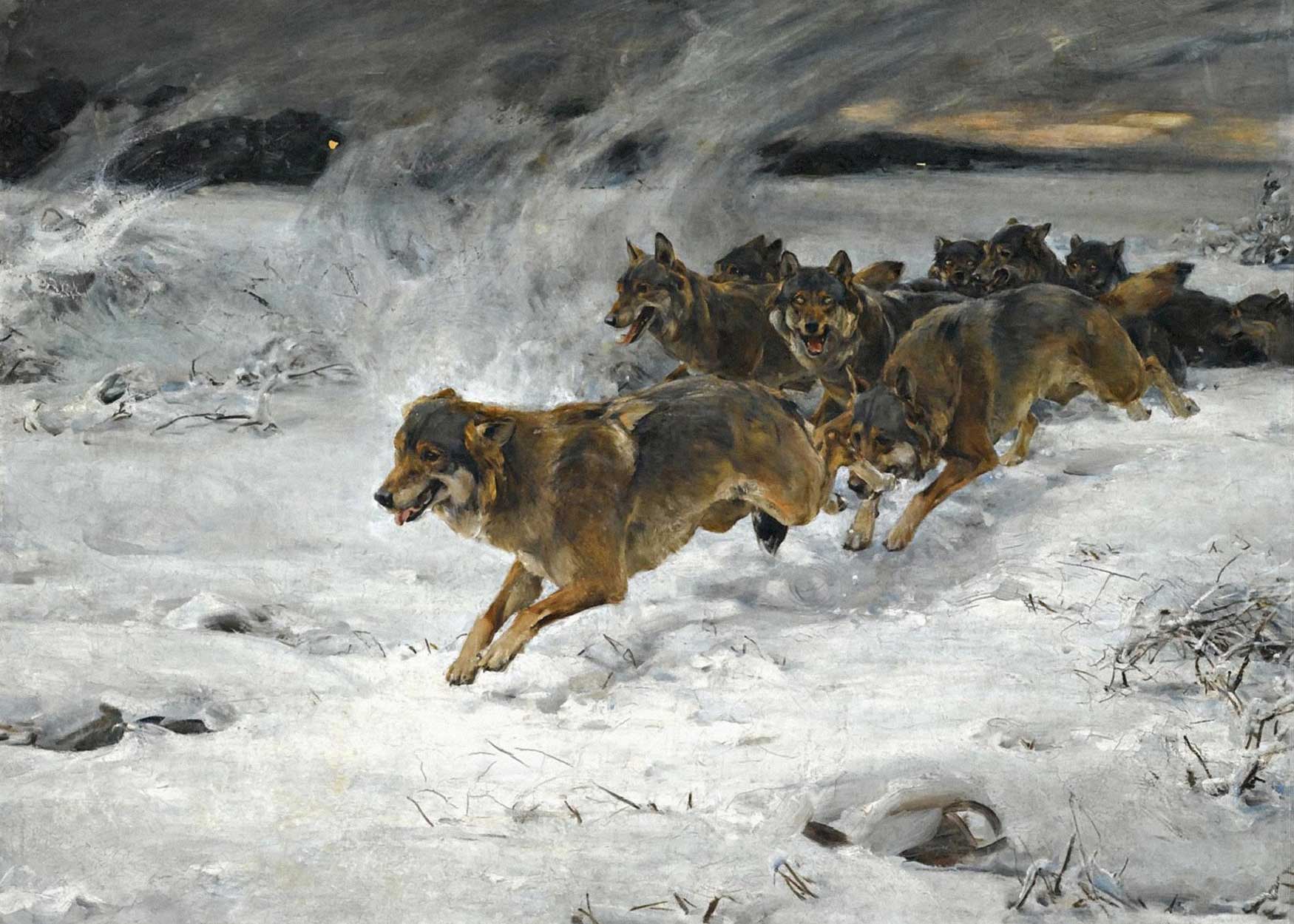From That Savage Gaze: Wolves in the Nineteenth-Century Russian Imagination
by Ian Helfant, associate professor of Russian and Eurasian studies and environmental studies
This book focuses on perceptions of wolves in mid-to-late nineteenth-century Russia, during an era when modern scientific approaches were gaining ascendancy but before the genesis of contemporary ecology and our concomitant recognition of the crucial importance of apex predators in well-functioning ecosystems.
As someone who supports ongoing wolf reintroduction and integration in the greater Yellowstone National Park ecosystem and elsewhere, I have found it deeply unsettling to come to terms with how Russians of the nineteenth-century perceived their wolf populations, and also to realize that the few other Westerners who have examined this topic have utilized it to promote a vehemently negative message about wolves in the twenty-first century. Looking at Yellowstone’s Druid pack through a telephoto lens a few summers ago, I also had to recognize, however, that the way in which we can choose to direct our gaze on wolves like these from afar bears little resemblance to the direct and often violent interactions between wolves and humans that took place in nineteenth-century Russia.
Unlike the North American experience historically and today, wolves in imperial Russia did regularly kill people, leaving an enduring imprint on Russian culture to the present day. Phillip Armstrong’s survey of human interpretations of the animal gaze also underscores a crucial truth: that the looks we exchange with other species encapsulate fundamental aspects of our own identities and our understandings of the beings that surround us. While I have foregrounded moments in which Russians gazed into the eyes of wolves and saw either a savage “other” or, less commonly, a reflection or refraction of themselves, the “savage gaze” of this book’s title should also be read quite pointedly.

Antiqua Print Gallery / Alamy Stock Photo
In nineteenth-century Russia, the way in which humans interpreted the gaze of this feared predator became a crucial symbol and marker of what it meant to be Russian. The manners in which Russians viewed, represented, abused, and pursued wolves were interwoven with their developing senses of who they were as Russians, the fault lines that existed in imperial society, and an overriding sense of “otherness” in relation to Western Europe. In other words, the ways in which Russians related to and described the significance of wolves during successive eras of the imperial period as Russian nature, society, and culture itself evolved, corresponded to deep truths (and misgivings) about themselves.
Experts like N.V. Turkin and Leonid Pavlovich Sabaneev, hunters, advocates for animal welfare, and many others interwove their perceptions of Russia’s Wolf Problem with their concerns about the empire’s fate in the wake of emancipation for example, to a degree that came as a surprise to me as I became more and more familiar with the historical materials at hand. The sense of inferiority and backwardness — of shame for their country — that so clearly showed in Sabaneev’s zoological monograph on wolves and Turkin’s magisterial works on Russian hunting law serve as powerful testaments to the processes through which animals can become an integral part of cultural self-definition, interpretation, and representation. It is no surprise that writers like Tolstoy, Chekhov, Zinovieva-Annibal, and the others I have discussed utilized wolves as central elements of their literary narratives, symbolic foci for expressing fundamental truths about the Russian empire and its people.
… the ways in which Russians related to and described the significance of wolves during successive eras of the imperial period as Russian nature, society, and culture itself evolved, corresponded to deep truths (and misgivings) about themselves.
While the Wolf Problem came to serve as a symbol of Russian backwardness, social disorder, cultural deficiencies and inadequate government support for its citizenry, imperial Russian wolves also represented a source of national identity and even pride. The prowess of the archetypal Russian borzoi hunter, able to bind a mature wolf single-handedly, would not have existed without the continued presence of this fearful foe. After emancipation, Russian gun hunters deeply valued the experience of hunting wolves. The borzoi wolfhounds themselves, so inextricably interwoven in their characteristics and even names with their ferocious quarry became a central symbol of Russian culture for those who admired them.
Yet here again, this source of pride for some served as an emblem of Russian cruelty for others. While we have encountered many depictions of the agony that borzois could inflict on wolves, one of the best-known passages involving Russian borzois occurs in a novel that has little to do with either wolves or hunting. Most readers of F. M. Dostoevsky will remember Ivan Karamazov’s narration to his idealistic younger brother Alyosha of a story that he presents as “typical” of old Russia at the beginning of the nineteenth century.
Ivan’s story, which he claims to have encountered in a contemporary journal that presents archival documents, is about a general who owns 2,000 serfs and hundreds of hunting dogs in the early 1800s. One day, a child house-serf throws a rock and hurts the paw of a favored hound. In response, the general has the eight-year-old boy stripped naked and unleashes his entire pack of wolfhounds on him. They tear him to pieces in front of his mother and the other serfs. After telling Alyosha the story, Ivan asks if the general deserved to be shot, to which Alyosha responds that he did. Dostoevsky chose to utilize a story about Russian wolfhounds to encapsulate a central moral dilemma in his earthy yet metaphysical novel about the fundamental nature of Russia and its inhabitants. Worlds apart from Tolstoy’s portrayal of Nikolai Rostov’s wolf hunt in War and Peace but set in the same era, the parable voiced by Dostoevsky’s brooding intellectual Ivan demonstrates the deep significance of both wolves and their domesticated counterparts in Russian culture as a locus for self-understanding.

Heritage Image Partnership Ltd / Alamy Stock Photo
This story from Brothers Karamazov also raises another set of issues that I have encountered in writing this book. Like animals, Russia’s serfs and even emancipated peasants rarely produced documents or other forms of self-expression and self-definition that have stood the test of time and could be woven into my own narrative. We have encountered their perspectives mostly in indirect and mediated form. Tolstoy’s Danilo, the “untrustworthy” peasants who would lie about the locations of wolves to huntsmen or naïvely fall victim to their “stratagems,” the “simple folk” who would put urine and salt on their wolf bites in hopes of avoiding rabies, the Smolensk peasants who traveled to Pasteur for treatment and created a sensation, Kuzminskaya’s uneducated widow — our perceptions of all of these figures rely on the interpretations of the mostly gentry and professional writers on whom I’ve necessarily had to draw in crafting my own narrative. Dostoevsky’s parable of a sadistic serf owner who sets his borzois on a peasant boy, which is diametrically opposed to the archetype exemplified in Boriatinsky’s patriarchal protection of his serfs from a wolf, shows how heavily the interpreter can skew our understanding of the relationships that truly existed.
These challenges and complications, ironically, are what have made this study so deeply satisfying for me. Russia’s wolves were inextricably interwoven with imperial Russians’ views of themselves and their country’s place in the world. It stands to reason that their interpretations of them were creative and sometimes involved distortions, just as their interpretations of themselves and their own culture did. The ways in which they incorporated wolves into the larger project of comparing their empire to Western Europe made this all the more interesting.
“These challenges and complications, ironically, are what have made this study so deeply satisfying for me.”
Wolves also remained a vital presence in imperial Russia to its very end, long after they had disappeared or dwindled throughout most of Western Europe. When three of Tolstoy’s sons posed in what appears to be a studio shot with the carcasses of nine wolves they had shot during a gun hunt near Kaluga in the winter of 1900 to 1901, they were demonstrating that wild nature remained a vital part of their countryside but also that they had dominated it by killing its ultimate incarnation — a large pack of wolves (and, incidentally, that their father had not successfully passed on his renunciation of violence against animals to at least some of his progeny). Ultimately, I hope that this book has demonstrated how significant a role such an extraordinary animal can play in a culture’s sense of itself.
This excerpt is provided courtesy of the publisher, Academic Studies Press.

